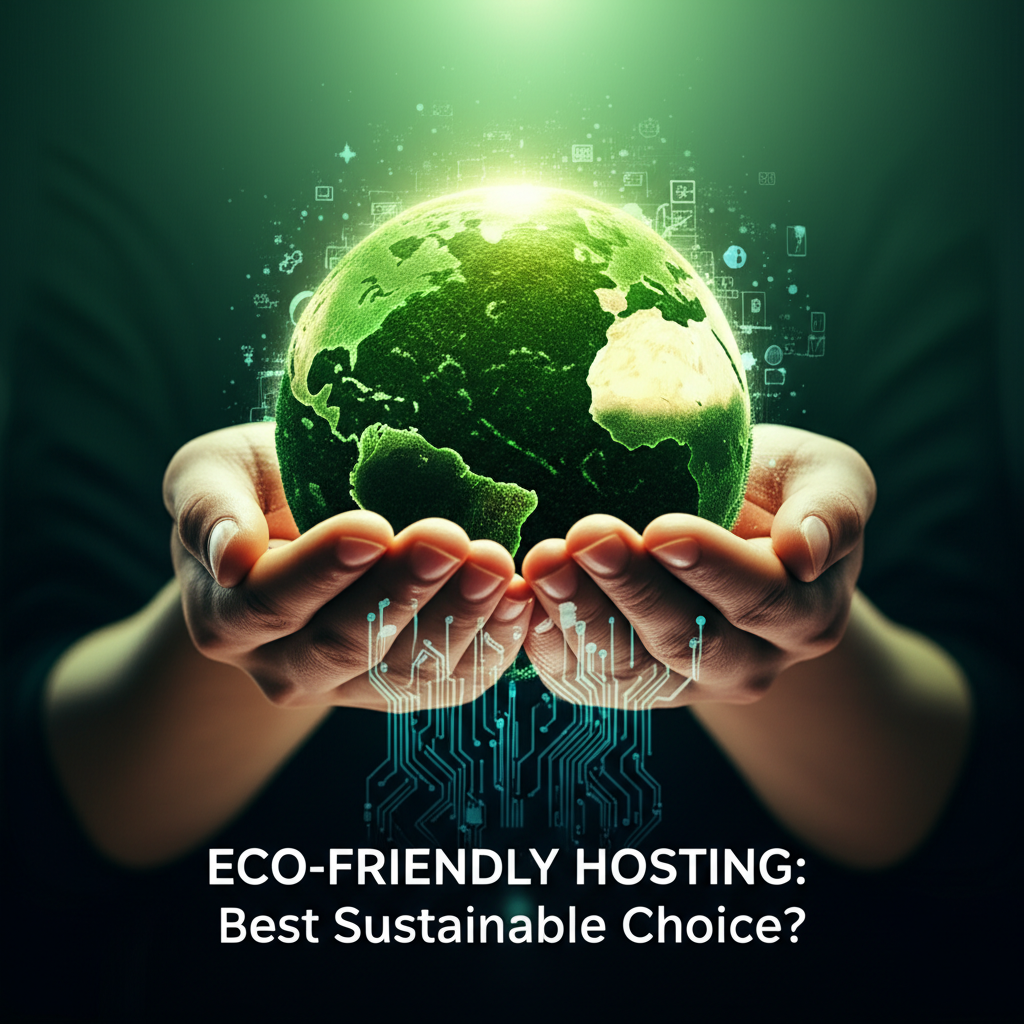- Understanding the Environmental Impact of Traditional Web Hosting
- Exploring the Benefits of Eco-Friendly Hosting
- Eco-Friendly Hosting: Is it Truly Sustainable?
- Choosing the Right Eco-Friendly Hosting Provider
- The Future of Sustainable Web Hosting
- Making the Switch to Eco-Friendly Hosting
Eco-Friendly Hosting: Best Sustainable Choice?
Eco-friendly hosting is becoming increasingly popular as individuals and businesses seek ways to reduce their environmental impact. But is it truly the best sustainable choice? This article delves into the world of green web hosting, exploring its benefits, drawbacks, and what to look for when choosing a provider. We’ll examine the impact of traditional hosting on the environment and how eco-friendly alternatives aim to mitigate these effects.
Understanding the Environmental Impact of Traditional Web Hosting
Traditional data centers, the backbone of web hosting, consume vast amounts of energy. Servers require constant power to operate and cool, contributing significantly to carbon emissions. This energy consumption is fueled primarily by fossil fuels, exacerbating climate change. Furthermore, the manufacturing and disposal of hardware components generate electronic waste, adding to the environmental burden. The constant need for upgrades and replacements in the fast-paced tech world contributes further to this issue. Water usage for cooling these massive data centers is another significant environmental concern, particularly in water-stressed regions.
Exploring the Benefits of Eco-Friendly Hosting
Eco-friendly hosting, also known as green hosting, aims to minimize the negative environmental impact of web hosting. These providers utilize various strategies to achieve sustainability, including:
Renewable Energy Sources: A core principle of green hosting is powering data centers with renewable energy sources like solar, wind, and hydro. This significantly reduces reliance on fossil fuels and minimizes carbon emissions. Many providers invest in renewable energy credits (RECs) to offset their energy consumption.
Energy-Efficient Infrastructure: Green hosting providers prioritize energy efficiency in their data centers. This includes using energy-efficient servers, optimizing cooling systems, and implementing virtualization technologies to reduce the number of physical servers required.
Carbon Offsetting Programs: Many eco-friendly hosts invest in carbon offsetting projects, such as tree planting or supporting renewable energy initiatives, to compensate for any remaining carbon emissions. These programs help neutralize the environmental impact of their operations.
Waste Reduction Strategies: Green hosting companies often prioritize responsible recycling and disposal of electronic waste. They may also partner with organizations that refurbish old hardware, extending its lifespan and reducing the demand for new resources.
Eco-Friendly Hosting: Is it Truly Sustainable?
While eco-friendly hosting presents a significantly better alternative to traditional hosting, it’s crucial to approach it with a critical eye. True sustainability requires transparency and verification. Some providers may engage in “greenwashing,” marketing themselves as eco-friendly without implementing substantial sustainable practices. Therefore, it’s essential to look for credible certifications and evidence of their commitment to environmental responsibility.
Choosing the Right Eco-Friendly Hosting Provider
Selecting an authentically green hosting provider requires careful research and consideration. Here are some key factors to look for:
Transparency and Certifications: Look for providers that openly share their sustainability practices and have obtained recognized certifications, such as those from the Green-e Energy program. These certifications offer independent validation of their environmental claims.
Renewable Energy Sources: Verify the percentage of their energy consumption sourced from renewables. Ideally, look for providers committed to 100% renewable energy or those actively investing in renewable energy projects.
Data Center Location: The location of the data center plays a role in its environmental impact. Consider providers with data centers in regions with a cooler climate, reducing the need for extensive cooling systems.
PUE (Power Usage Effectiveness) Rating: PUE measures how efficiently a data center uses energy. A lower PUE signifies greater energy efficiency. Look for providers with a PUE closer to 1.0, indicating minimal energy waste.
The Future of Sustainable Web Hosting
The demand for eco-friendly hosting is expected to grow as environmental awareness increases. Technological advancements, like more energy-efficient hardware and improved cooling technologies, will contribute to further reducing the environmental footprint of web hosting. As consumers become more discerning and demand greater transparency, the industry will likely see a shift towards more genuinely sustainable practices. The future of web hosting hinges on prioritizing sustainability and making environmentally responsible choices.
Making the Switch to Eco-Friendly Hosting
Transitioning to eco-friendly hosting is typically a seamless process. Most providers offer migration services to transfer your existing website with minimal downtime. While eco-friendly hosting might sometimes come at a slightly higher price point than traditional hosting, the long-term benefits for the environment and the positive impact on your brand’s image often outweigh the cost difference. By making the switch, you’re not just choosing a web host; you’re investing in a more sustainable future.











Leave a Reply